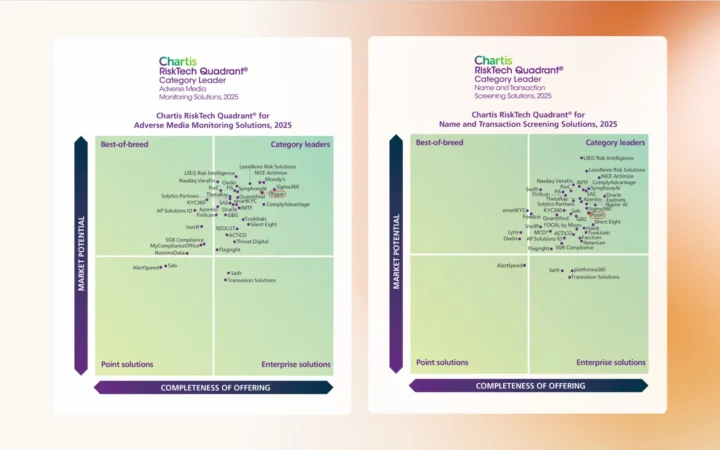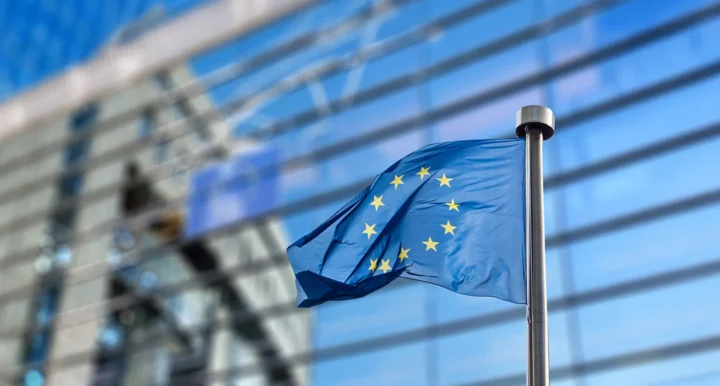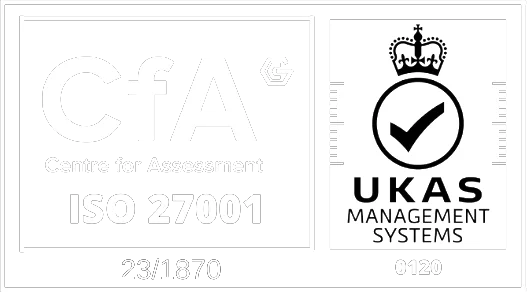Sanctions risk is a fact of life for every global business but in the last few years, that risk has grown significantly. Geopolitical crises, such as Russia’s invasion of Ukraine, have prompted governments to add hundreds of new designations to sanctions lists, and renew or expand existing measures. The US, for example, added over 3,100 names to its Specially Designated Nationals (SDN) and Blocked Persons List in 2024 – a 25% increase on 2023.
In this climate, sanctions obligations don’t end with a round of basic checks of global watchlists. Compliance solutions need to be capable of dealing with the direct sanctions risk exposure posed to firms by their customers and clients, but also with the third party risk posed by their supply chains.
An organisation’s suppliers, partners and vendors may represent third party networks that span multiple jurisdictions, geographies, goods, intermediaries, and ownership structures. Add to that, the potential for bad actors attempting to evade sanctions, or conceal their actions with shell companies, and the supply chain risk factor quickly becomes considerable.
Given the complexity of this environment, and the potential regulatory penalties, it’s imperative that sanctions risk is treated as a core compliance priority as firms build their supply chain.
And the best way to approach that challenge is to build robust sanctions compliance into the supply chain from the outset, with a solution that can adapt to an evolving regulatory landscape and emerging geopolitical risks.
In this post, we’re going to discuss the key steps involved in doing just that.
Step 1. Implement Comprehensive Screening Controls
Effective screening remains the best way for firms to learn about their clients and establish the sanctions risks that they pose. Accordingly, acquiring suitable screening technology should be your first priority when building a sanctions-ready supply chain.
However, while most approaches to sanctions compliance entail a screening process for clients, involving a search for names designated on the relevant sanctions lists (such as the SDN list), supply chain risk requires a much broader screening scope.
That means that you must implement screening technology capable of covering all relevant counterparties that form part of the third party network – vendors, suppliers, partners, and so on – in those list searches. This comprehensive approach to sanctions risk shouldn’t stop at list searches, either, but should serve to acquire as much data as possible on search targets including:
- Adverse media stories: Sanctions risk is often revealed in adverse media stories long before persons are officially designated on sanctions lists. Investigative journalists may break stories that impose sanctions evasion activities and indicate that you should change your compliance response.
- Politically exposed persons (PEPs): Elected officials and government employees pose a greater sanctions risk because of their proximity to political and bureaucratic financial resources.
- Ultimate beneficial ownership: Sanctioned persons may attempt to conceal their identities by using shell companies or complex corporate infrastructure.
Step 2: Conduct a Sanctions Risk Assessment
Following Financial Action Task Force (FATF) recommendations, sanctions screening solutions should be risk-based. This means that you must deploy compliance measures in proportion to the risk that your organisation faces: lower risks demand a less intensive compliance response, higher risks, a more intensive response.
However, the effectiveness of a risk-based screening solution relies on you being able to accurately assess your supply chain to determine the risk that it poses. The sanctions risk assessment serves to help establish your risk appetite, define thresholds for compliance decision-making, and then dedicate resources to achieving those compliance objectives.
To conduct an effective risk assessment, you need to map your supply chain and capture any relevant risk factors. These may include:
- Sanctions lists: It’s important to identify the relevant sanctions lists that pose a compliance risk to your organisation. For example, firms in the EU must screen against the EU consolidated list, and so on.
- Industry: Different industries pose different levels of sanctions risk. Persons involved in, or connected to the shipping industry, for example, or those that trade in dual-use items, often carry a high sanctions risk.
- Location: Supply chains that contact certain geographic locations, such as Russia, China, and the Middle East, may carry an elevated risk.
- Corruption: Supply chains that involve jurisdictions with comparatively weaker regulatory infrastructure may be more vulnerable to corruption and associated sanctions evasion activities.
Step 3: Leverage Technology and Data
The success of the steps outlined above is dependent on you being able to implement a technology solution capable of managing the vast amounts of data involved in the supply chain risk assessment process. The solution must also output high quality intelligence that facilitates effective compliance decision-making in a constantly evolving sanctions risk landscape.
Given the expanded data demands of supply chain compliance, you’ll need to move your solution beyond manual processes and focus on automating as much of the process as possible, enabling your compliance team to focus their time on the activities where their skills are best used. With that in mind, you need your sanctions screening technology tools to deliver the following capabilities:
- Real-time monitoring to help identify suspicious activity, including red flag indicators of sanctions evasion.
- Data integration from a wide range of sources, including sanctions, watchlists, PEP data, adverse media, plus your own internal data in both structured and unstructured formats.
- Entity resolution and advanced analytics capable of revealing hidden links to sanctions risk, and connecting supply chains to persons designated on sanctions lists.
- Global adverse media screening capabilities covering screen and print media, digital media, and social media content.
- Multi-language tools capable of screening natively against foreign language sources, and accounting for regional spelling and naming variations.
- Automation to streamline responses to sanctions risk, including triaging alerts, assessing evidence, and automatically reviewing and closing false positive alerts.
Step 4. Train and Raise Awareness Across Your Organisation
A sanctions screening solution is only as good as the human employees that run it. To that end, you’ll need to ensure your compliance team members understand the organisation’s risk appetite, and have the necessary expertise to deal appropriately with the outputs and alerts that your solution generates.
So, to keep compliance teams up to speed with the capabilities of your screening technology, and the latest regulatory developments, you’ll need to implement a schedule of regular training and skill development. Your goal should not only be to impart regulatory and technical understanding, but to create a culture of compliance in which emergent challenges don’t disrupt services, and teams can adapt quickly to new risks.
You’ll need to extend this culture of sanctions compliance across your wider business, especially if your firm is part of a larger group of companies where some may be operating in different regulatory environments. This could mean establishing your sanctions obligations at group level, identifying further obligations for different locations, developing additional training materials, and implementing a mechanism to verify that overseas branches, subsidiaries, and local partners have understood, and are compliant with, the relevant standards.
To facilitate this kind of organisation-wide transformation, think about:
- Policies: Consider centralising your compliance policies while localising specific controls.
- Overseas training: Focus on training overseas offices on key sanctions obligations and red flag indicators of sanctions evasion activity specific to their locations.
- Tools and frameworks: Provide access to shared screening tools and decision-making frameworks to ensure a consistent approach.
5. Maintain Robust Third Party Due Diligence Processes
Your supply chain sanctions compliance work is never done – it’s an ongoing process that evolves and grows with the business relationships that you maintain, and the sanctions risks that you face.
It’s therefore important to think about the following third party due diligence processes:
- Continuous monitoring: Don’t simply conduct a risk assessment at the beginning of a business relationship as a one-off. You’ll need to monitor third parties in your supply chain constantly to ensure their risk profiles remain accurate. Leverage technology to automate rounds of screening and integrate real-time adverse media monitoring tools to be notified of changes in risk as soon as possible.
- Geopolitical risk: Stay informed of emerging areas of geopolitical risk as a way of anticipating sanctions risk. The greater your awareness of potential new risks, the better able you’ll be to adjust your sanctions solution.
- Evasion strategies: Be aware of the latest sanctions evasion tactics. Monitor for updates and guidance from relevant national and international regulators, such as the FATF, to ensure you receive the correct information and advice when the global risk landscape changes.
- Reassess regularly: Conduct periodic risk assessments to test the efficacy of your supply chain risk solutions. Reevaluate your risk appetite after regulatory updates and geopolitical events.
Master Supply Chain Screening with Ripjar
In a period of unprecedented geopolitical uncertainty, it’s more important than ever to protect your organisation, and your reputation, from risk. You can do that by extending your sanctions compliance priorities to your supply chain, and leveraging technology to shoulder the increased data burden.
Ripjar’s AI-powered screening platform Ripjar 3P60 is designed to help firms meet that goal. A scalable, comprehensive approach to third party risk management, Ripjar 3P60 builds automated efficiency, flexibility, and resilience into your third party screening process, leveraging advanced machine learning to help you spot supply chain risks, and deal with them before they can harm your business.
Learn more about how Ripjar can support your supply chain screening





